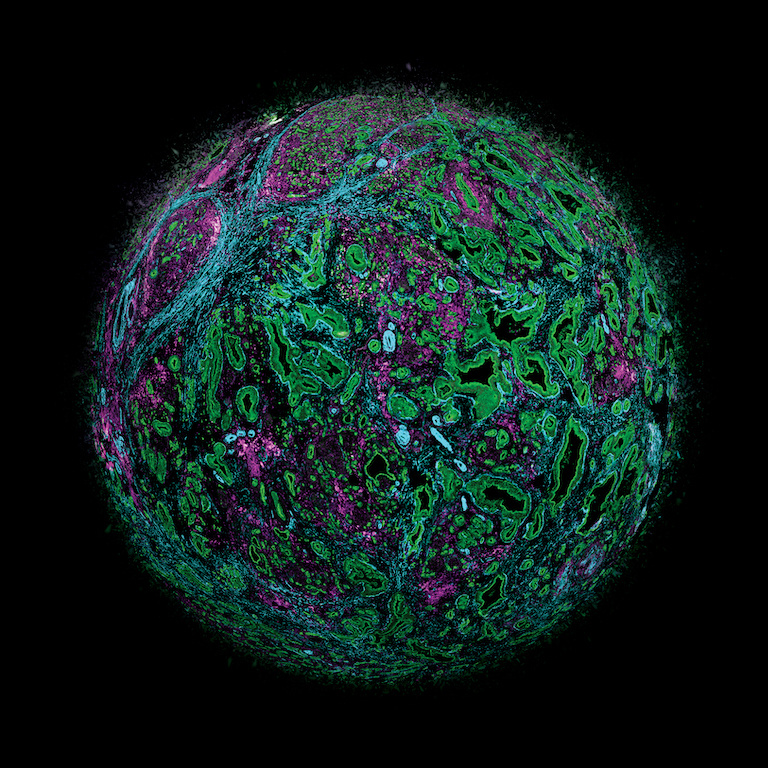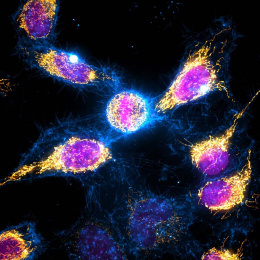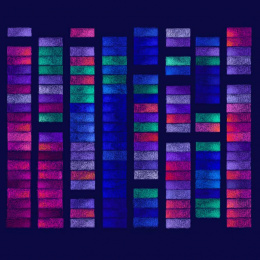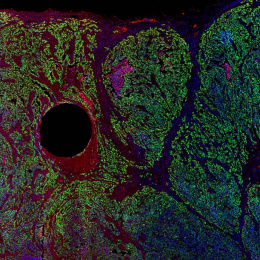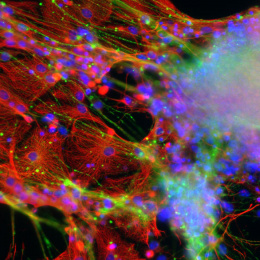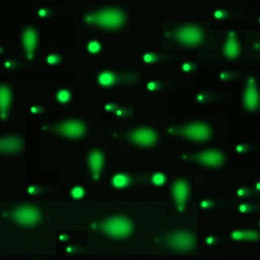Mapping the Molecular Landscape of Pancreatic Cancer
Mapping the Molecular Landscape of Pancreatic Cancer
Collections: Precision Cancer Medicine
Hannah Hoffman, William Hwang, Karthik Jagadeesh, Jimmy Guo, Payman Yadollahpour, Aviv Regev, Tyler Jacks
Koch Institute at MIT
This image depicts a slice of untreated, human, pancreatic cancer tissue, which has been stained to display three cell types that contribute to the lethality of this disease: cancer cells (green), cancer-associated fibroblasts (cyan), and immune cells (magenta). Although they can’t be seen, on this tissue are hundreds of thousands of probes that ultimately helped us determine which types of every human mRNA — and how many of each type — were present.
The lethality and treatment-refractory nature of pancreatic cancer are largely mediated by collaborative interactions between cancer cells and other cell types in the tumor microenvironment, including cancer-associated fibroblasts and immune cells. By constructing a high-resolution molecular landscape of the multicellular subtypes and spatial communities that compose pancreatic cancer and the dynamic remodeling associated with cytotoxic selection pressure, additional therapeutic vulnerabilities are identified to augment precision oncology efforts in pancreatic cancer.
